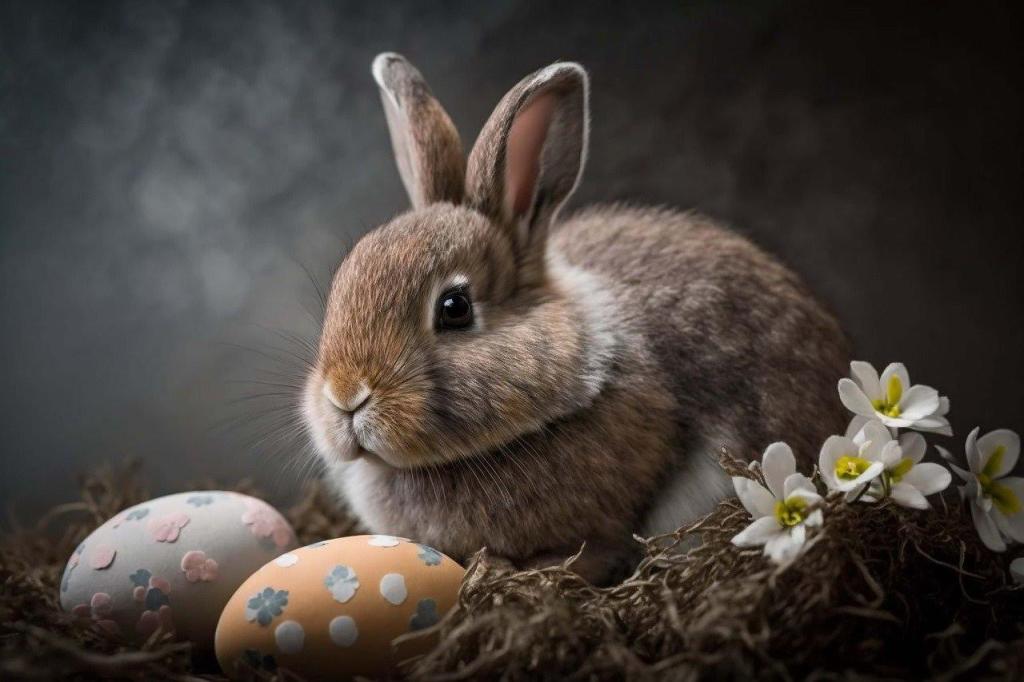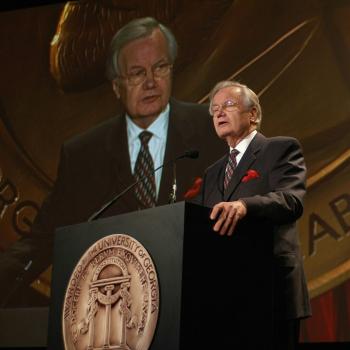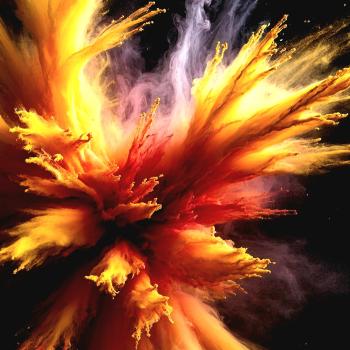
My plans for Patheos posts have taken a small detour as we approach Easter. The two most recent posts are factual rather than fanciful: (1) Lent as a time to spring clean your home as well as your soul and (2) joyful Easter traditions of various cultures around the world. The next article, which is half-written, concerns the irony of virulent antisemitism within a religion – that is, Christianity – which worships a Jewish man as the Son of God. In the midst of all this seriousness, I decided to take a break. So, let’s have a little fun with several Easter stories. Namely: Why does the Easter bunny bring eggs? And how did other fanciful Easter traditions begin?
Why Does the Easter Bunny Bring Eggs?
The Easter bunny is the Easter version of Santa Claus, but rather than ride in a sleigh and deliver gifts to good little children, he hops from house to house and delivers Easter eggs.
What does the Easter bunny have to do with Christ? Nothing, really… probably no more than Santa has a connection to the baby Jesus, Mary and Joseph.
If you are new to the Bible, let me assure you that you will never find any mention of the Easter bunny, Easter eggs and related trappings, nor will you discover Santa hidden in some rarely read verse.
So, why do Americans have an Easter bunny? There are several theories about the Easter bunny’s origins. One idea is that rabbits have been a sign of fertility since ancient times, possibly beginning with Eostre, the pagan goddess of fertility, according to Time magazine. Patheos contributor Molly Khan has an article about Eostre, which you can read by clicking here.
Why Rabbits?
“Rabbits, known for their energetic breeding, have traditionally symbolized fertility,” Time magazine wryly notes. (Read that post here.)
The logic behind this idea sounds reasonable. Easter is about life and new beginnings, and I can attest to Time’s conclusion about rabbits being “energetic” breeders.
Some of my grandchildren’s rabbits recently got loose, and these days, I can barely step outside without seeing a large rabbit zipping around the corner of the house or darting across one of our fields.
I’m afraid dozens more will make appearances this summer, as I’ve been told that healthy females can produce several litters a year. Heaven help us!
But while the Easter bunny rides high in the U.S., it isn’t a sign of secular Easter celebrations everywhere. In Australia, children have an Easter bilby, which is a rabbit-like marsupial. In Switzerland, it’s an Easter cuckoo, and in Germany, it may be an Easter rooster or fox, Time said.
When Did the Easter Bunny Come to America?
German immigrants apparently introduced the Easter bunny to America when they settled in Pennsylvania during the 1700s, according to History.com. They called this magical hare Osterhase or Oschter Haws.
Children would build nests, and the hare would leave colored eggs, which – according to one theory – represent the blood of Christ.
The Easter bunny legend grew, as legends do, and eventually Easter baskets replaced the nests, and the Easter bunny began delivering chocolates and gifts on Easter morning along with the eggs. Sometimes, children left carrots in case the rabbit was hungry, just as they often leave cookies for Santa on Christmas Eve.
Why Does the Easter Bunny Bring Eggs?
Good question! I’ve never encountered a rabbit that laid eggs, and I doubt that you have either.
Children realize at a certain age that rabbits don’t lay eggs. They give birth to baby rabbits. Consequently, legends of the Easter bunny skip the messy details and focus on stories about the rabbit delivering eggs rather than laying them.
So, why does the Easter bunny bring eggs rather than potatoes, turnips or some other food item? Easter eggs are probably rooted in pagan traditions. Eggs are an ancient symbol of new life, and pagans associate them with the spring season.
The image of an egg also fits the Christian narrative, as we see eggs as representations of Christ coming out of the tomb. Eggs also may represent the Trinity, as the egg has three parts – the shell, the yolk and the albumen, according to History.com.
The idea of decorating eggs probably dates back to the 13th century. The reasoning is that many ancient Christians gave up eggs during Lent. With the coming of Easter, they celebrated the return to eating eggs by making them beautiful with color and decorations.
How Did Candy Enter the Picture?
There are always excuses to introduce candy into a situation. People began to associate Easter with candy in the early 19th century. Chocolate eggs were an early favorite, and the egg-shaped jelly bean became popular in the 1930s, History.com said.
In recent years, the best-selling non-chocolate concoction has been a sugary marshmallow treat that originally was yellow and shaped like baby chicks. Now, they vary in appearance.
It’s no surprise that candy sales soar during Easter, making this holiday second only to Halloween in the number of sales, per History.com.
Why Are Lamb & Ham the Meats of Choice?
Easter — like many, many holidays — is also associated with food. “Lamb at Easter has roots in early Passover celebrations,” History.com said.
Passover stems from the 10 plagues of Egypt during which God sent a series of plagues on the Egyptians because their pharoah would not free the Israelite slaves. After the ninth plague, God sent a 10th and final plague: the angel of death would kill the firstborn sons of the Egyptians.
God told Moses to instruct the Israelites to paint their doors with the blood of sacrificed lambs. The blood would be a sign for the angel to pass over their homes and spare their firstborn.
Thus, eating lamb became a tradition among Jewish people during Passover celebrations, with roasted leg of lamb being a favorite dish.
Ham became the most popular meat for Easter dinner in the U.S. for the simple reason that it was readily available. “Historically, pigs were slaughtered in the fall and cured over the winter. They were ready to eat once spring arrived and the Lenten fast ended,” explained food and style expert Martha Stewart.
So, there you have answers or at least stories about several secular Easter traditions.
New Life & Living
For me, Easter is all about new life and living. Christ’s resurrection and the beginning of a new life through him are most important.
Easter also means the end of cold, dreary days and the seemingly endless winter rain where I live…the sight of tulips, daffodils and other spring flowers popping up in my flower garden… and the joy of stepping outside and taking a deep breath of fragrant warm air. Life has returned.
May you have a blessed and happy Easter!













